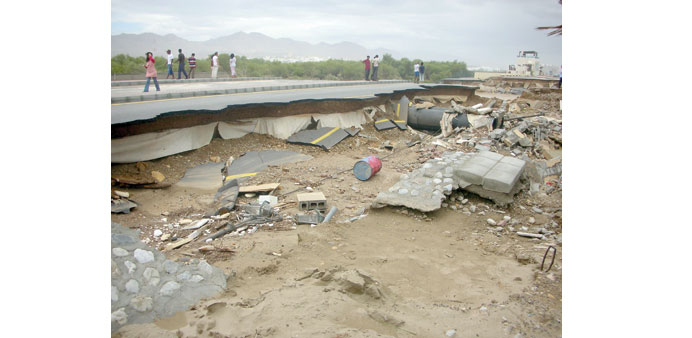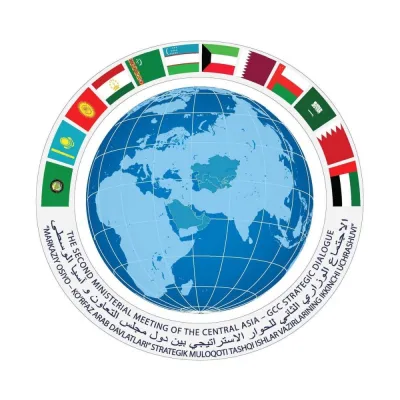An overview of the damages in Musacat, Oman, after the passage of Cyclone Gonu in 2007. Photo by Unflavoured
By Steff Gaulter
What do you think would happen if a tropical cyclone hit the Gulf? How do you think Qatar would cope?
It’s not something that any of us have probably ever worried about, or even thought about. In fact, the idea of any rain at all seemed rather far-fetched just two days ago, given the months of hot, dry weather that we had seen. However, researchers believe that a tropical cyclone slamming into the Gulf isn’t quite as unlikely as you may think. It is not thought to be a probable event, but scientists believe that it’s not outside the realms of possibility.
There is no evidence to suggest that Qatar has ever been hit by a tropical cyclone. However, a few storms have hit the Arabian Peninsula. These storms are not exactly common, but they do happen every few years.
Tropical cyclones which affect the Arabian Peninsula form to the west of India and they usually occur at a very specific time of year. That’s because they tend to develop on the leading edge of the monsoon rains. These are the rains that creep across India during the summer months and as they edge across the land, they also stretch out over the sea as well. If an area of low pressure develops within the leading edge of the monsoon rains, then occasionally it can develop into a tropical cyclone.
The monsoon rains happen at almost the same time every year, so if a tropical cyclone develops on its leading edge, there is a narrow window of when it is most likely to hit the Arabian Peninsula. This explains why 2007’s Tropical Cyclone Gonu and 2010’s Tropical Cyclone Phet made landfall hit almost exactly 3 years apart. Tropical Cyclone Gonu struck Oman on June 6, 2007 and Phet struck on June 4, 2010.
Gonu is the strongest cyclone on record in the Arabian Sea, and the strongest to hit the Arabian Peninsula. The excessive rains caused widespread flooding, washed away roads and triggered extensive power cuts. After hitting Oman, the storm eased and tracked north towards Iran. A total of 78 people are believed to have lost their lives in the storm, which caused over four billion US dollars of damage.
The impact of Tropical Cyclone Gonu was widespread, but the storm was something of an anomaly in the region. Generally tropical cyclones that form in the Arabian Sea are less potent than those that develop in the Caribbean or in the Pacific. They usually head northwards towards the Arabian Peninsula, but then quickly weaken. At the time of year that these storms form, there is a strong upper air wind that flows along the south coast of Oman, which works to disrupt the cyclones. In June there is also incredibly dry air over the whole Arabian Peninsula, which weakens the system when it is dragged into it.
The local meteorology therefore works to protect the region and so does the local geography. For a tropical cyclone to retain its strength, it needs to remain over the sea, which is its energy source. Therefore, if a powerful storm were to hit Doha, the cyclone would have to approach the Gulf near Oman from a very precise angle, then make an abrupt left turn at the Gulf of Hormuz. This track is not impossible, but it is highly unlikely.
If a tropical cyclone does not track along the Gulf to Qatar, then the only other way that Qatar could be hit by one would be if it actually formed in the Gulf. Given the temperature of the water, this is theoretically possible; tropical cyclones can only form above water which is over 26C (79F). However, given the small size of the Gulf, it is very unlikely, and even if one did form, it is doubtful that it would remain over water for long enough to become very intense.
Given the size of the Gulf and the local meteorology, Qatar is relatively well protected from tropical cyclones. However, researchers from Princeton and Massachusetts Institute of Technology determined that the chance of a storm affecting the area is not negligible. In fact, their research showed that the probability of this happening increases dramatically if the changing climate is taken into account.
The scientists focused on Dubai as their reference point, rather than Doha, but alarmingly they discovered that even a moderate-intensity storm could generate an extremely high storm surge. They estimated that a storm surge of 1.9 metres (6 feet 3 inches) could be expected once every 1,000 years. Given the flat topography of the land in the region, a storm surge of this scale is highly likely to cause more damage than the winds of a tropical cyclone.
Worryingly, any storm surge in the future could be exacerbated by the rising sea level, which the study didn’t take into account. Rising sea level is considered one of the most likely results of the globe’s current warming. This means that even if tropical cyclones change very little over the coming century, sea level rise means that storm surge events will be worse than they are today.
Despite the alarming study, it’s highly unlikely that Qatar will ever be hit by a tropical cyclone, so it’s nothing that we should lose sleep over. Having said that, it is the job of researchers to look at every possible scenario. This helps to ensure we are always prepared for the worst, even if we never actually have to face it.



